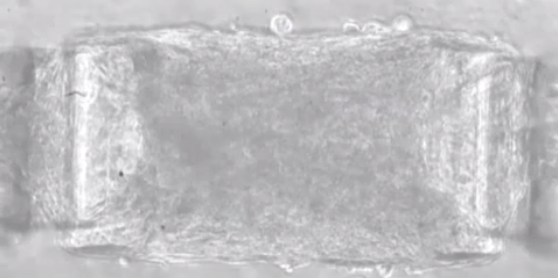Genetically Engineered Muscle Cells Could Be Used To Build Organic Robots

Researchers have managed to remotely stimulate and control lab-grown muscle tissue using light. This creates the real possibility of "bio-integrated" robots: machines which are constructed using organic material.
Conducted by a team of scientists from the Massachusetts Institute of Technology (MIT) and the University of Pennysylvania, this pioneering research is set to appear in the journal Lab on a Chip, and speaks of the capability of a hybrid between nature and machine: a "robotic animal" that can move with the strength and flexibility of their biological counterpart.
“We can put 10 degrees of freedom in a limited space, less than one millimeter,” Harry Asada, the Ford Professor of Engineering in MIT’s Department of Mechanical Engineering commented. “There’s no actuator that can do that kind of job right now.”
This was done via remotely stimulating lab-grown muscle tissue using light to prompt a variety of responses. The skeletal muscle cells used are genetically modified to express a particular light-activated protein, and 20-millisecond laser pulses are fired upon them to cause individual strips of muscle to contract. Complex muscle movements can be created and controlled through this method.
The options of where this bio-integration could be applied are quite literally endless, and we can't help but liken this to the Gekkos from MGS4... That both terrifies us and fascinates us all at the same time.
Press Release Source: MIT
Jason England

